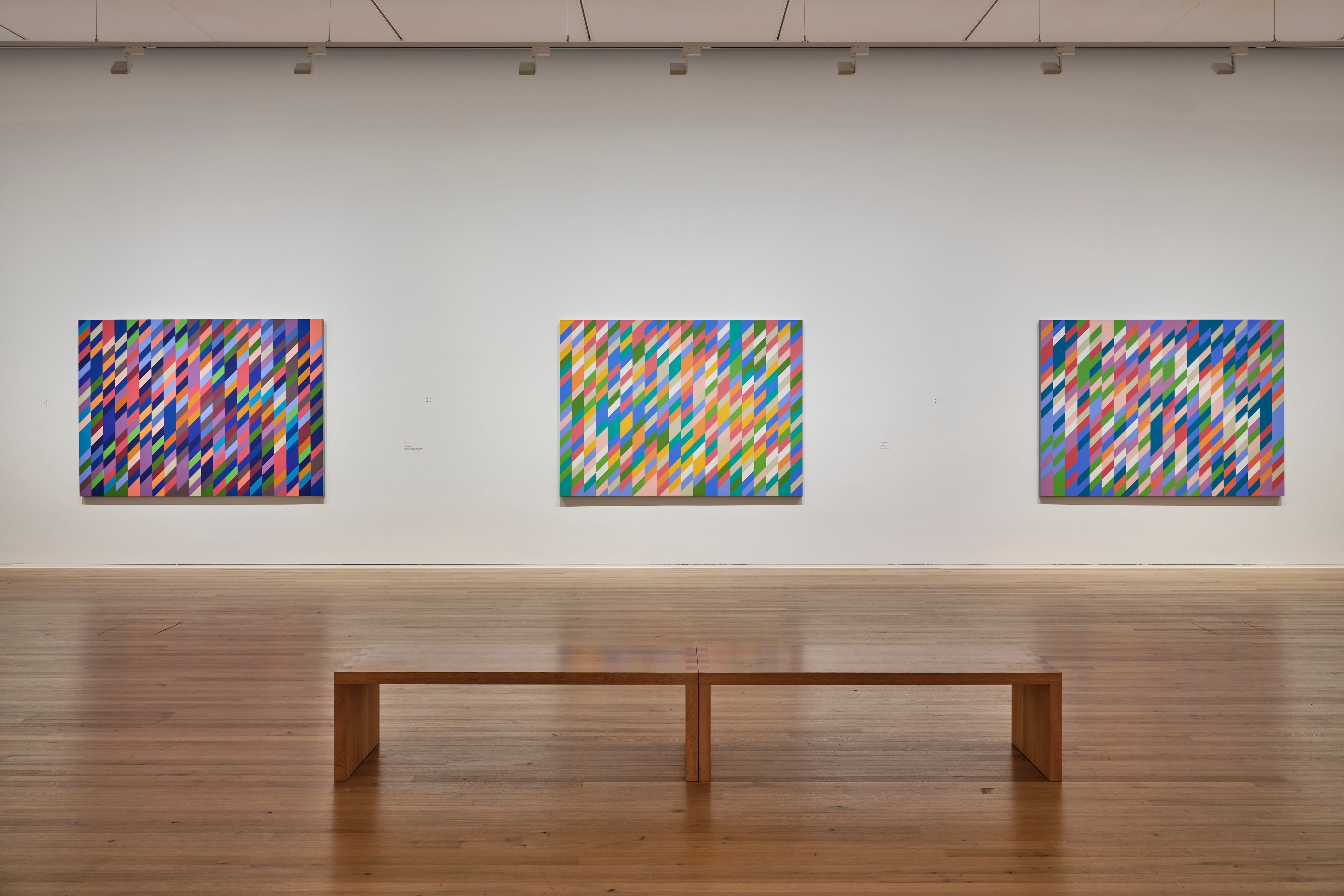Zentrum Paul Klee, Bern
June 2022
June 10–August 21, 2022 Zentrum Paul Klee presents Bridget Riley: Looking and Seeing, Doing and Making, an exhibition exploring the connections between Bridget Riley and Paul Klee. Alongside many other influences, Riley’s work draws upon the ideas of Bauhaus artists like Klee and Kandinsky, and Klee’s Bauhaus teachings in particular. In 1924, Paul Klee gave a talk for the opening of an exhibition at the Kunstverein Jena. Published in English in 1948 with the title “On Modern Art,” the talk, as well as Klee’s lecture notes from the Bauhaus, examined the pictorial functions of line, tonality, and color, and the infinitely complex images that can arise from them. These texts had a lasting impression on Riley’s practice, and in 2001, Riley co-curated a Klee exhibition with Robert Kudielka at the Hayward Gallery in London. On occasion of this exhibition, Riley wrote that Klee showed her the meaning of abstraction in art: In creative matters, abstract forms should not be seen as the result of an intellectual process of abstracting from experience but rather as a starting point, holding a “potential…. which will genuinely enlarge the vocabulary of art and the perception of the world around us.” Both Riley and Klee also drew vital artistic inspiration from their respective travels to North Africa. Riley visited Egypt in the winter of 1979–1980, and the tomb paintings, architecture, and landscape had a lasting impact on her. There, she studied Egyptian painting techniques, which led her to develop her “Egyptian palette,” consisting of seven colors: turquoise, blue, red, yellow, green, black, and white. This parallel serves as the starting point for this exhibition. In 1914, Klee traveled to Tunisia, where he experienced a “breakthrough into color.” Later, when he went to Egypt in 1928, he was struck by the relationships between light and color and the cultural landscape in the Nile Valley. The exhibition includes Riley’s stripe paintings from the early 1980s, which are based on the Egyptian palette, and demonstrates how this artistic turning point reverberated in Riley’s work through the early 2000s.
